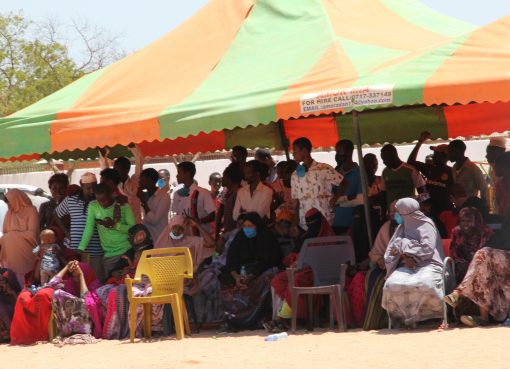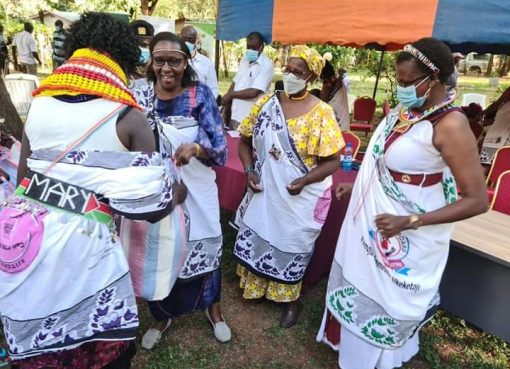Fifty eight percent of deaths recorded in Nakuru during the 2017/2018 period were caused by Non Communicable Diseases (NCDs), new data from the County government reveals.
The figure is above the national average as official statistics released by the Health Cabinet Secretary (CS), Sicily Kariuki indicate that during the period, the ailments were responsible for over 55 per cent of deaths in Kenya and further accounted for more than 50 per cent of hospital admissions.
The Nakuru County Chief Officer Medical Services, Dr. Solomon Sirma said out of the 2,434,976 deaths registered during the period under review 1,411,928 were caused by life style ailments such as cancer and cardiovascular diseases. Most of the casualties were aged 60 years and above.
Other non-communicable ailments ravaging the county’s population according to Dr. Sirma include asthma, mental illness, hypertension, diabetes and kidney failure.
The devolved unit acknowledges in its Nakuru County Health Sector Strategic and Investment Plan 2018-2022 that a lot more needs to be done considering that close to 25 per cent of the population was either on treatment or unknowingly living with non-communicable ailments.
The 2018-2022 Strategic Plan aims to promote screening of non-communicable diseases at primary health care service providers (health centers). According to the 2018 Health Sector Performance Review Report for 2016/2017, hypertension is the leading Non Communicable Disease (NCD) detected during outpatient visits. This contributes to 50 per cent of total hospital admissions and over 40 per cent of facility mortality.
The County Public Health Chief Officer, Dr. Samuel King’ori revealed that though close to 100,000 Kenyans die every year from complications related to hypertension, half of the population has never been screened for blood pressure.
The 2018-2022 Strategic Plan states that within the 0-4 years age bracket the dominant non communicable condition that caused deaths was identified as prematurity and low birth weight and claimed 22.7 percent of infant deaths recorded during the period.
Birth asphyxia and trauma was second placed for causing 16.4 percent of mortalities while Endocrine disorders took the third slot for wiping 2.2 percent. Protein-energy malnutrition was identified as the fourth leading cause of infant deaths at 1.8 percent.
“We have to address lifestyle diseases with renewed vigour and heavy investments in research and public awareness campaigns. These otherwise preventable conditions are significantly reducing life expectancy of Nakuru residents. The young are succumbing to the diseases at a very productive age, while the not so elderly people in their 60s are dying prematurely,” observed the Chief Officer.
Data from the Strategic and Investment Plan- 2018-2022, reveals that out of the estimated 2,180,000 of the county’s population in 2018, those aged 65 years and above stood at 58,860.00 representing a mere 2.7 percent.
The County Executive Committee Member for Health, Dr. Zackary Gichuki Kariuki indicated that the strategic plan proposes to invest in screening and geriatricians (doctors who specialize in the elderly and the diseases that affect them).
“The rapid rise in NCDs is predicted to impede poverty reduction initiatives in low-income areas of this County, particularly by increasing household costs associated with health care and loss of breadwinners,” said Dr Gichuki.
Commenting on the strategic plan, the Kabazi Member of County Assembly, Dr. Peter Mbae said he had moved a motion which was passed and approved making it mandatory for the County government to conduct free annual screening for non-communicable diseases (NCD) at ward level.
The motion which is yet to become law compels the devolved unit to set up fully equipped and staffed comprehensive screening centers in all its 55 wards.
“One of the biggest burdens with non-communicable diseases is that those who have them have no idea, and so if you do not know you are sick you are unlikely to seek treatment.
Non communicable diseases such as cancer, asthma, diabetes and hypertension among others do not have distinct symptoms like malaria or pneumonia which are associated with fever and headaches, and people only find themselves diagnosed with the disease when they go for other checkups,” said Dr. Mbae.
The legislation which heavily borrows from the Kenya National Strategy for the Prevention and Control of NCDS: 2015-2022, highlights the importance of prevention, as a means to reduce the number of patients seeking treatment.
It mandates the Department of Health to come up with strategies and policies that will govern the screening centres when they are rolled out.
“Most low income earners are unlikely to go for routine medical checkups which are sometimes costly. The high death rates among our grassroots population has been due to late diagnosis, shame in seeking treatment, low income and fear of being found that they have the diseases.
Early detection gives you the best chance for getting the right treatment quickly, avoiding any complications. By getting the correct health services, screenings, and treatment you are taking important steps toward living a longer, healthier life,” stated the MCA
According to the Chair of Kenya Society of Hematology and Oncology, Dr. Sitna Mwanzi, who is also an oncologist at Aga Khan University Hospital, more women, are going for screening than men but late after diseases have advanced.
Women also lead in new cancer cases with 28,688 getting the disease compared to 19,199 men, representing 56 per cent of the total new cases.
According to the Ministry of Health Kenya registered 47,887 cancer cases in 2018, with breast leading at 13 per cent. Cervical cancer stood at 11 per cent and esophageal cancer at nine per cent. There were 15,762 deaths in 2016, which rose to 16,953 in 2017.
A report jointly published by the World Health Organization (WHO) and Lancet on World Health Day last year, shows that the prevalence of diabetes in Kenya was six per cent in 2014, a 150 per cent rise from 2.4 per cent in 1980.
Hypertension cases were on the rise in Kenya in 2016/17 as compared to 2013/14, from close to 1500 per 100,000 populations, to over 2,000
Urbanization, an ageing population, and the adoption of unhealthy lifestyles that include poor diets, lack of exercise and excessive alcohol consumption have been identified as factors leading to a growing prevalence of non-communicable diseases.
Kenya has the highest number of cancer-related deaths across East Africa, according to new data by the World Health Organization (WHO).
Cancer kills 32,987 Kenyans a year, an estimated 40 per cent of the 83,426 deaths reported in the three East Africa countries of Kenya, Uganda and Tanzania, according to the World Health Organization’s Globocan Report that analyses new cases among men and women.
Tanzania comes second with 28,610 cases while Uganda had the least deaths with 21,829 or slightly above 25 per cent of all the cases reported by the three countries.
The prevalence of diabetes in Kenya has more than doubled in the last three decades, accounting for 20 per cent of deaths in the country.
With a national prevalence rate of between 3.1 per cent and 4.6 per cent (between 1.4 million and 2.1 million Kenyans), experts are warning that the cases are rising at an alarming rate.
Today, one in every 17 Kenyans has diabetes, and 12,890 people in the country died from both diabetes and high blood glucose in 2018.
A report jointly published by the World Health Organization (WHO) and Lancet on World Health Day last year, shows that the prevalence of diabetes in Kenya was six per cent in 2017.
By Anne Mwale




